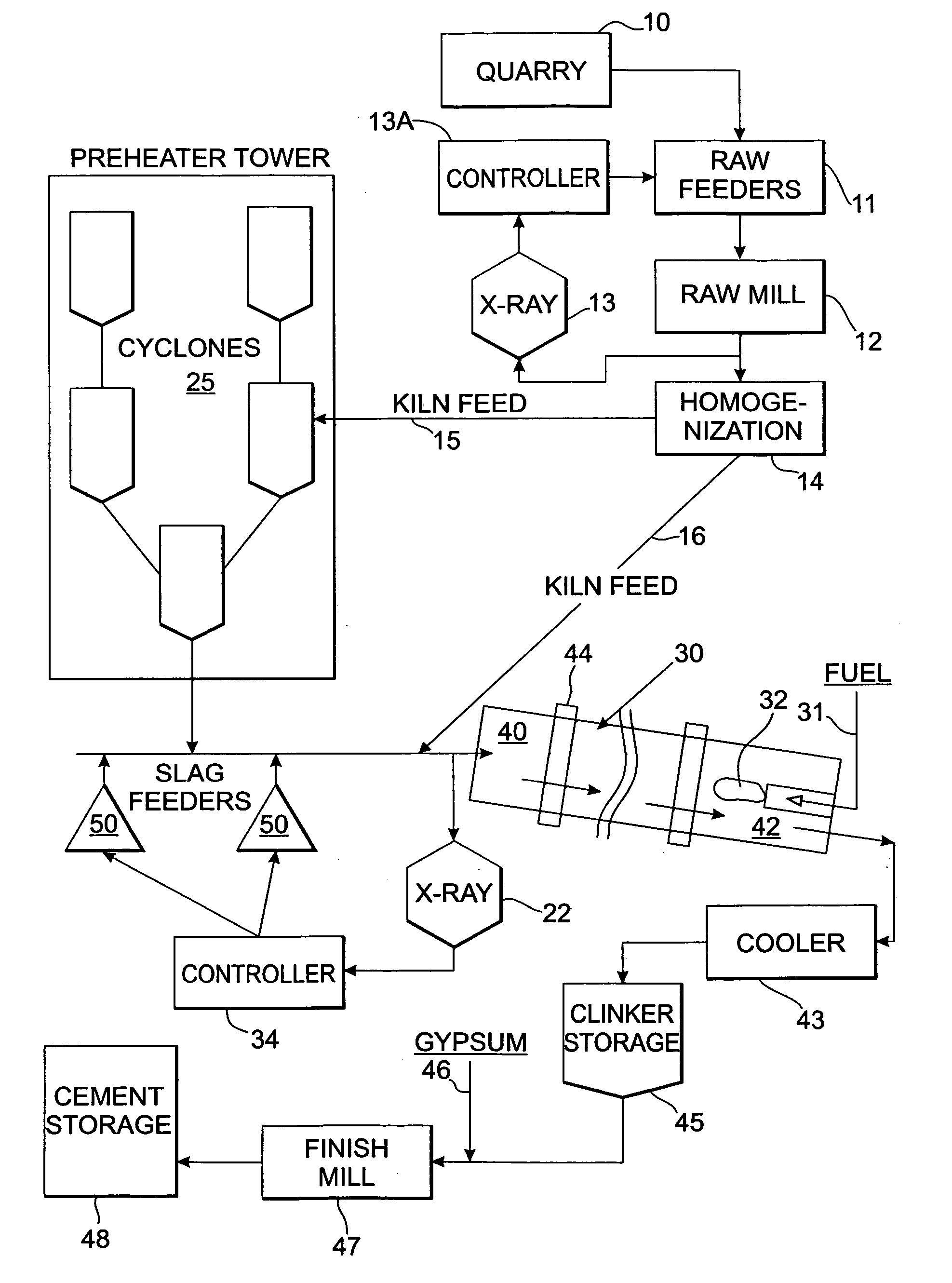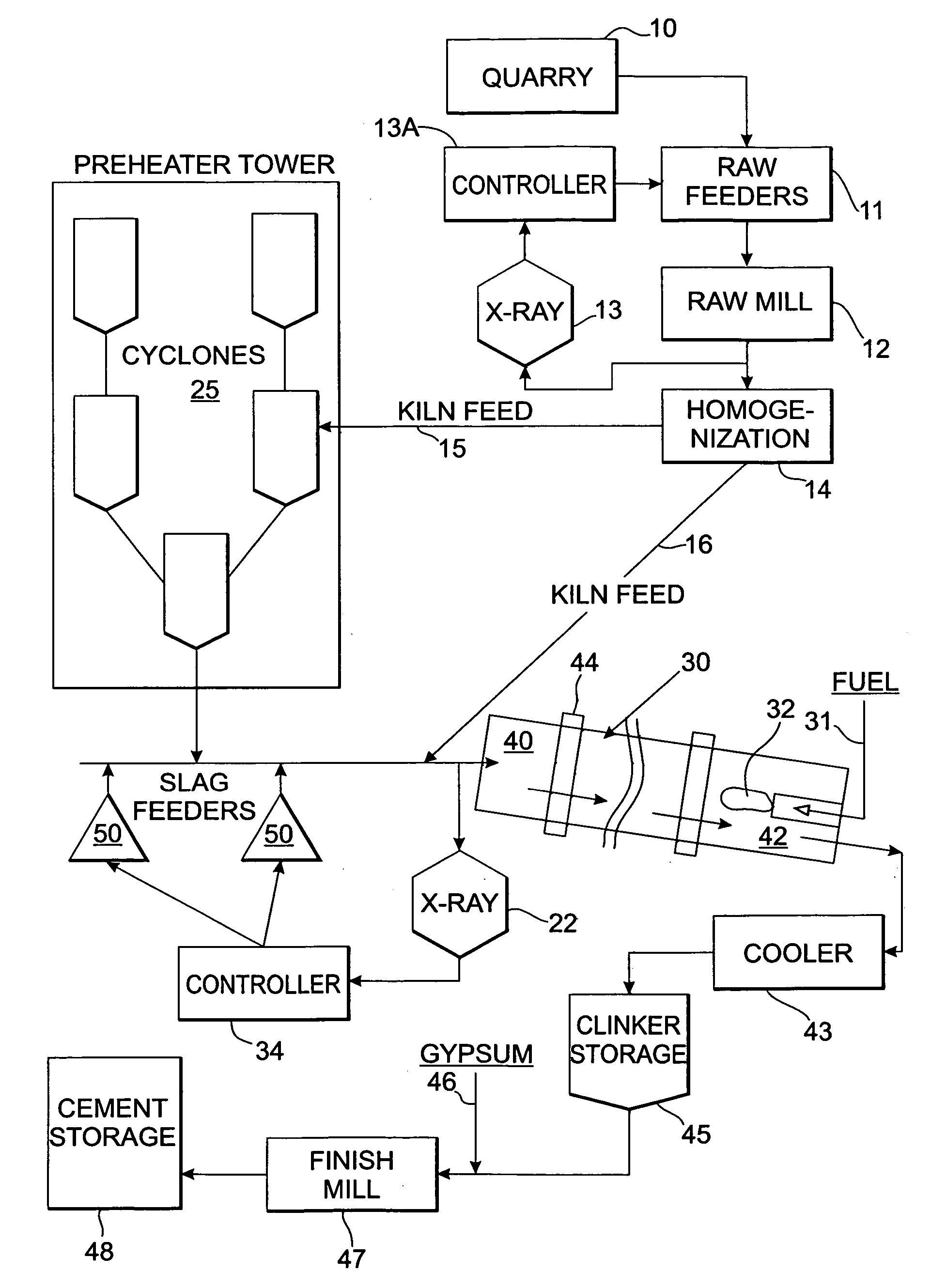Method and apparatus for control of kiln feed chemistry in cement clinker production
a technology of kiln feed and cement clinker, which is applied in the direction of lighting and heating equipment, furniture, transportation and packaging, etc., can solve the problems of kiln upset, poor quality clinker, undesirable refractory deterioration, etc., and achieve the effect of reducing heat of hydration or resistance to sulfate attack and facilitating changes in clinker chemistry
- Summary
- Abstract
- Description
- Claims
- Application Information
AI Technical Summary
Benefits of technology
Problems solved by technology
Method used
Image
Examples
Embodiment Construction
[0011] The apparatus of the present invention is illustrated in FIG. 1. The kiln feed 15, 16 referred to above comes from the homogenizing storage system 14 and is comprised of limestone from the quarry 10 and several raw materials such as clay, shale, fly ash and iron oxide that are proportioned together from the raw feeders 11, ground in a raw mill 12, and blended in a homogenization storage system 14. The chemistry of the resulting blend of raw materials is tested on a routine basis by an x-ray 13 spectrometer or other method of analysis. Based on these x-ray results the proportions of the various raw materials feeders 11 are adjusted as necessary by the controller 13A to achieve the desired chemical targets. This process for adjusting the raw material feeders is known to those of ordinary skill in the art. Chemical targets, referred to as ratios, that are used for clinker manufacture are tricalcium silicate written as C3S and tricalcium aluminate written as C3A, although other r...
PUM
| Property | Measurement | Unit |
|---|---|---|
| lag time | aaaaa | aaaaa |
| temperature | aaaaa | aaaaa |
| chemical composition | aaaaa | aaaaa |
Abstract
Description
Claims
Application Information
 Login to View More
Login to View More - R&D
- Intellectual Property
- Life Sciences
- Materials
- Tech Scout
- Unparalleled Data Quality
- Higher Quality Content
- 60% Fewer Hallucinations
Browse by: Latest US Patents, China's latest patents, Technical Efficacy Thesaurus, Application Domain, Technology Topic, Popular Technical Reports.
© 2025 PatSnap. All rights reserved.Legal|Privacy policy|Modern Slavery Act Transparency Statement|Sitemap|About US| Contact US: help@patsnap.com


